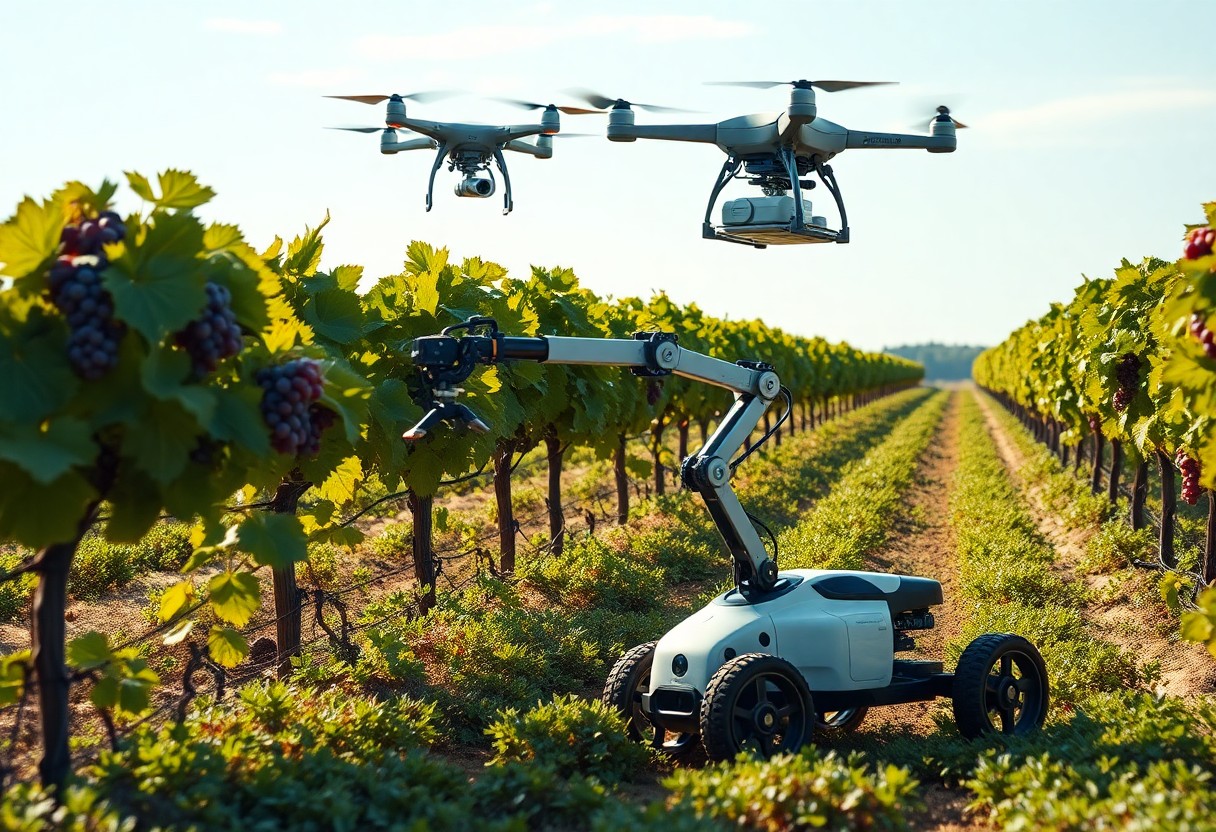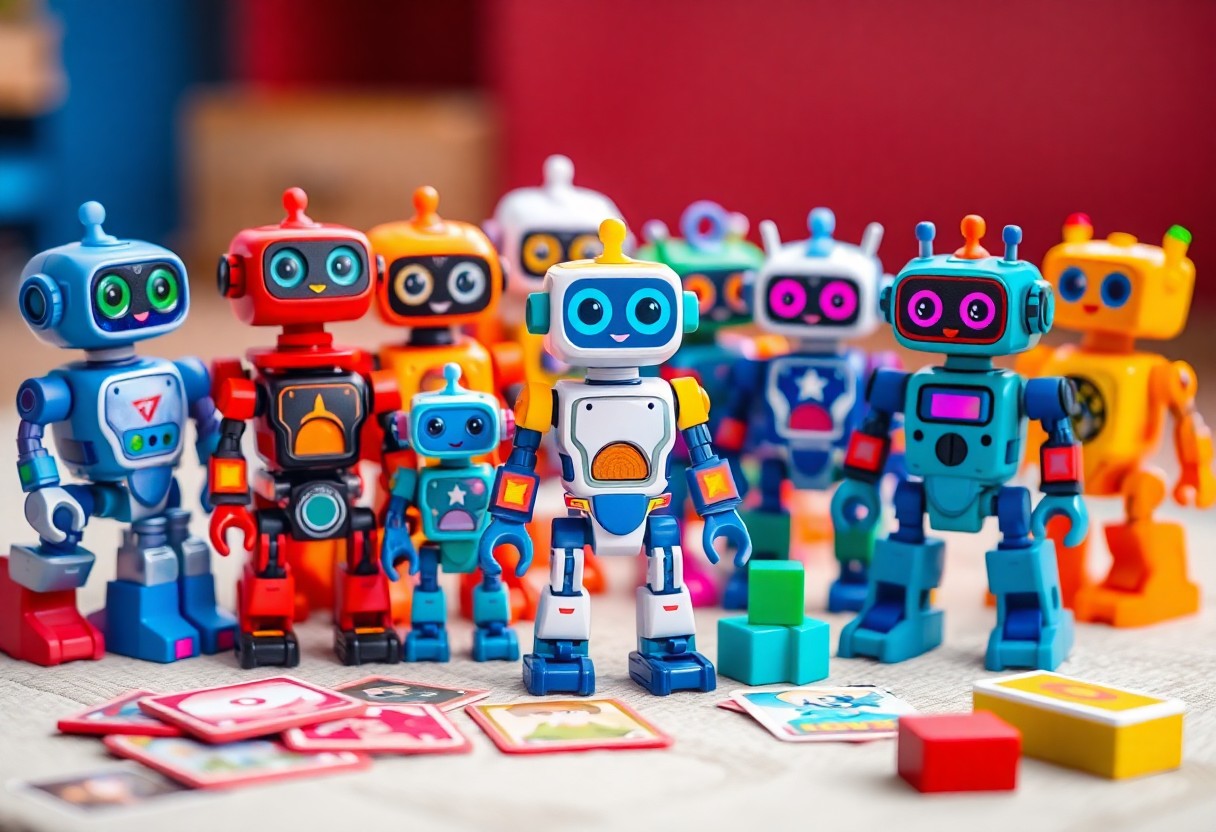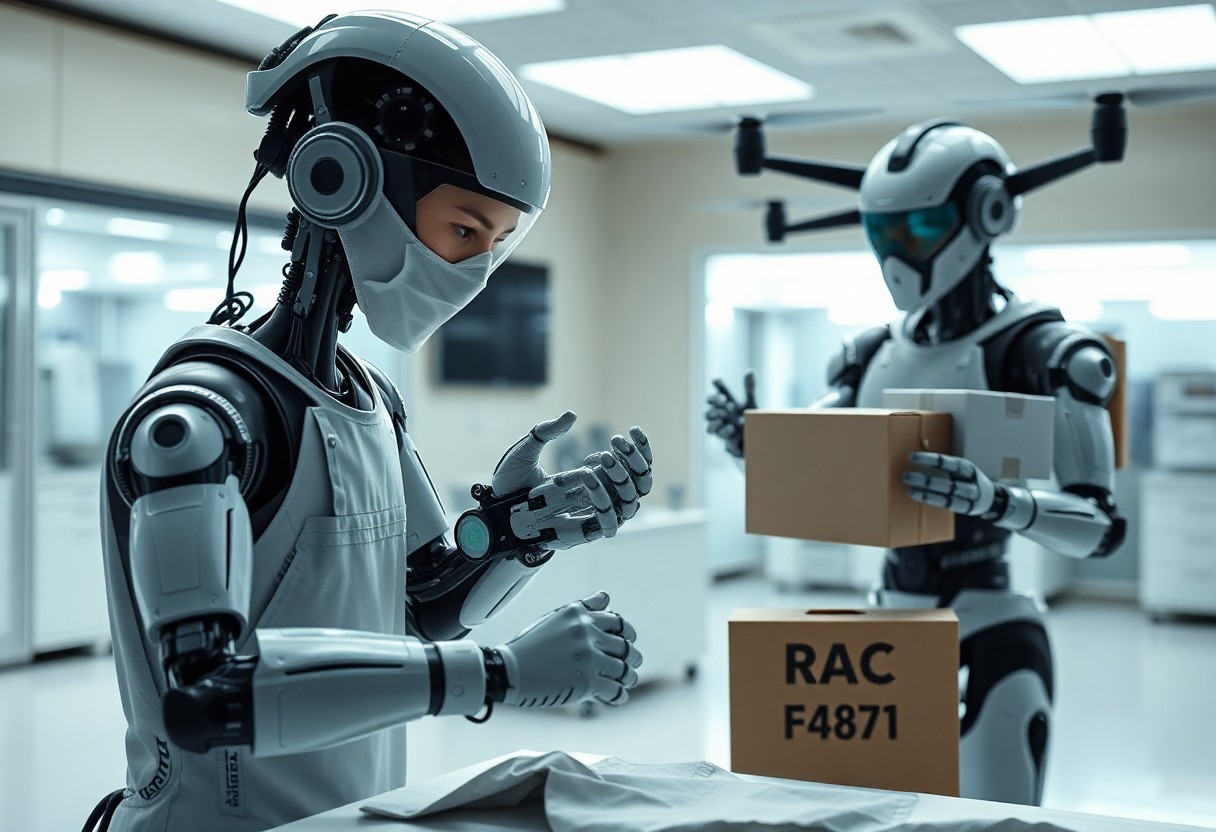There’s a fascinating world of robotics that is transforming how industries operate today. As you explore this list of ten key types of robots, you’ll discover how each one is reshaping workflows, enhancing efficiency, and improving safety across various sectors. From manufacturing to healthcare, understanding these robots and their capabilities will give you insight into the future of technology and its profound impact on your daily life and work. Get ready to probe into the diverse applications and innovations that continue to push boundaries and drive progress.
Autonomous Shipping: Navigating a Sea Change
Autonomous shipping is transforming the maritime industry by utilizing advanced robotics and AI to enhance navigation and operational efficiency. As you embrace this technology, you’ll witness its ability to optimize routes, reduce fuel consumption, and minimize human error. This innovation promises not only to streamline logistics but also to redefine how goods are transported across oceans, making your supply chain smarter and more reliable.
The Technological Leap in Maritime Logistics
With the integration of autonomous vessels, maritime logistics is experiencing a significant technological leap. These ships are equipped with sophisticated sensors, machine learning, and real-time data analytics that allow them to make independent navigation decisions. As you adapt to these advancements, you can expect not only improved safety but also enhanced accuracy in deliveries, keeping your operations ahead of the competition.
Economic Implications for Global Trade
The rise of autonomous shipping is set to reshape economic dynamics in global trade. You will find that automation can lower operational costs, increase throughput, and facilitate faster shipping times. This evolution is likely to lead to new market opportunities, as nations and companies invest in better logistics systems to accommodate the ambitious pace of autonomous fleets. Consequently, your engagement in international trade may become more efficient and profitable.
These economic implications go beyond mere cost savings. As autonomous vessels streamline the shipping process, you may see shifts in trade patterns and balances as nations position themselves to capitalize on these efficiencies. Countries with strong investments in tech-driven logistics could become dominant players in global markets, potentially increasing competition and altering the landscape of international trade. This shift toward automation can lead to job displacement in certain areas, but it also opens up new opportunities in tech and maintenance, making adaptation vital for industries impacted by these changes.
Precision Farming: Cultivating Tomorrow’s Crops
As agricultural demands grow, precision farming employs robotics to optimize crop production with unprecedented efficiency. Utilizing advanced technologies, such as drones and automated machinery, you can monitor soil health, assess crop conditions, and automate planting and harvesting processes. This fusion of agriculture and technology is paving the way for increased yields, reduced waste, and a more sustainable agricultural future, allowing you to cultivate crops smarter, not harder.
Mechanization vs. Traditional Agriculture
In the age of precision farming, mechanization offers you methods and tools superior to traditional agricultural practices. While conventional farming relies heavily on manual labor and basic machinery, mechanized agriculture incorporates robotics and automation to streamline operations. This shift not only boosts productivity but also minimizes the physical demands on you and your workforce, supporting a larger-scale and more efficient farming system.
Enhancing Sustainability Through Data
Precision farming enables you to harness data for informed decision-making, significantly enhancing sustainability practices. With access to real-time insights about soil conditions, weather patterns, and crop health, you can optimize resource usage. This data-driven approach allows you to apply fertilizers and water only where and when needed, reducing waste and environmental impact, ultimately leading to more sustainable farming practices.
By utilizing sensors and drones to gather comprehensive data on your fields, you can identify issues before they become significant problems. This proactive approach helps you adjust your farming methods to preserve resources. As a result, you not only boost crop yield but also minimize chemical runoff and conserve water, making your farming operation both economically and environmentally sound. Embracing technology and data allows you to foster a resilient agricultural ecosystem for the future.

Construction Robotics: Building the Future
As you venture into the world of construction robotics, you’ll discover a transformative force reshaping the industry. These advanced machines streamline building processes, enhance productivity, and improve precision in construction tasks. From 3D printing to autonomous vehicles, construction robotics allow you to tackle complex projects with increased efficiency, ultimately paving the way for innovative building methods and smarter urban development.
Safety Improvements on Job Sites
Incorporating robotics into construction sites significantly enhances safety for workers. Robotic devices can take on hazardous tasks, such as demolition or working in confined spaces, minimizing the risk of injuries. By utilizing these machines, you are not only protecting your workforce but also fostering a more efficient, safer job site.
The Intersection of AI and Infrastructure Development
As you explore the integration of AI in construction, you will find its potential to revolutionize infrastructure development. AI-driven robotics can analyze vast amounts of data, optimizing design and construction processes. This tech-savvy approach allows projects to be completed more quickly and accurately, ensuring that they meet both safety standards and community needs.
The intersection of AI and infrastructure development marks an exciting shift in how projects are conceived, planned, and executed. By leveraging AI algorithms, construction robots can predict project challenges and streamline workflows, giving you the power to make data-driven decisions. This means shorter timelines and cost savings while maintaining high-quality output. The synergy between AI and robotics in construction invites you to rethink traditional practices, fostering innovation and sustainability as you build the infrastructure of tomorrow.
Health Care Revolution: Robots in Medicine
The integration of robots into the healthcare sector is transforming patient care, enhancing surgical precision, and improving overall outcomes. From performing intricate surgeries to assisting in patient rehabilitation, robots are not only enhancing the capabilities of medical professionals but also streamlining processes. As you navigate this evolving landscape, you’ll find that these technological advancements are reshaping how healthcare is delivered, offering innovative solutions to both patients and practitioners alike.
Surgical Precision and Patient Outcomes
As far as surgery, robots are significantly enhancing precision, which directly influences patient outcomes. Using robotic-assisted surgical systems, you can expect smaller incisions, reduced trauma, and shorter recovery times. This technology allows surgeons to perform complex procedures with unparalleled accuracy, minimizing risks and improving overall success rates. Patients benefit from faster recuperation and a reduced likelihood of complications, positioning robotic surgery as a pioneering force in modern medicine.
The Role of Robotics in Elder Care
In elder care, robots are proving to be invaluable companions and assistants. They assist in monitoring health conditions, providing companionship, and aiding in daily activities, which helps ensure seniors maintain their independence. By implementing robotic solutions, you can alleviate some of the pressures on caregivers and enhance the quality of life for elderly individuals, promoting a safe and supportive living environment.
As you consider the role of robotics in elder care, it’s important to understand how these innovations not only support physical needs but also address emotional well-being. Robots, such as companion bots, engage seniors in social interactions, reducing feelings of loneliness. Additionally, automated systems can help manage medications, remind users of appointments, or alert caregivers when assistance is needed. By integrating robotics into elder services, you ultimately create a more holistic approach to care, fostering dignity and enhancing overall quality of life for aging populations.
Retail Invasion: How Robots Are Reshaping Customer Service
As the retail landscape continues to evolve, robots are transforming customer service in innovative ways. By automating tasks and enhancing interactions, robots allow stores to provide a more efficient shopping environment. You can now experience quicker checkouts, better inventory management, and personalized assistance, all of which contribute to a seamless shopping journey. As robots become more prevalent, their impact on customer satisfaction and operational efficiency in retail is undeniable.
The Rise of Automated Checkouts and Inventory Management
Automated checkouts are increasingly becoming the norm in retail settings, reducing wait times and streamlining the payment process. You benefit from this innovation as it enhances convenience and efficiency during your shopping experience. Simultaneously, robots excel in inventory management, ensuring shelves are stocked and products are easily accessible. This increased accuracy in stock management minimizes the risk of out-of-stock items and helps you find what you need more quickly throughout your shopping trip.
Enhancing the Shopping Experience Through AI
The integration of AI in retail is revolutionizing how you shop, making your experience highly personalized. AI-driven chatbots and virtual assistants can answer questions, recommend products based on your preferences, and even guide you through the store. With intelligent analytics, retailers can tailor promotions to your interests, ensuring that you find the best deals. This focus on personalization not only enhances your experience but also builds customer loyalty and satisfaction.
Through AI-powered systems, you gain access to personalized product recommendations tailored to your shopping history and preferences. Imagine walking into a store where a robot greets you and suggests items that align with your tastes. This level of engagement transforms traditional shopping into an interactive experience that caters directly to your needs, making each visit more enjoyable and efficient. As retailers continue to invest in AI, you can expect your shopping experience to become even more tailored and sophisticated, ensuring that your preferences are always front and center.

Exploration Robotics: Pioneering Uncharted Territories
Exploration robotics is revolutionizing how you discover and interact with uncharted territories, whether on Earth or beyond. These advanced machines are engineered for challenging environments, providing vital data and insights that were previously out of reach. You can see their impact across various fields, from deep-sea exploration to the vast expanses of outer space, enabling you to uncover new worlds and phenomena.
The Use of Drones in Environmental Monitoring
Drones are becoming vital tools for environmental monitoring, allowing you to gather data on ecosystems with unprecedented precision and efficiency. Equipped with advanced sensors and imaging technology, these aerial robots can survey large areas quickly, providing you insights into wildlife populations, deforestation, and climate change effects. This ability to access hard-to-reach locations affords you the opportunity to monitor environmental health like never before.
Space Exploration: Robots as the Next Frontier
As you venture into space, robots are becoming your most reliable allies in exploration. They can withstand the harsh conditions of outer space, gather data on celestial bodies, and carry out missions that are too risky for humans. These advanced machines are your eyes and ears, making it possible for you to understand the universe’s mysteries and even prepare for future human colonization of other planets.
In space exploration, robots such as rovers and orbiters enable you to explore distant planets, moons, and asteroids, providing vital data on their composition and atmosphere. For instance, NASA’s Perseverance rover on Mars is gathering geological evidence and searching for signs of ancient life. As you continue to advance robotic technologies, your capacity to explore space increases, paving the way for potential human settlement and resource harvesting in the future. These robotic missions not only expand your knowledge of the cosmos but also inspire innovations that could benefit life on Earth.
To wrap up
With this in mind, understanding the 10 key types of robots and their influence across various industries can significantly enhance your perspective on technological advancements. As you navigate your professional and personal engagements, recognizing the role of robotics—from manufacturing to healthcare—will better prepare you for the future landscape. Embracing these innovations not only provides insight into current trends but also equips you to leverage their benefits and adapt to the evolving workforce dynamics. Your proactive approach to these developments will empower you to harness the full potential of robotics in your endeavors.






